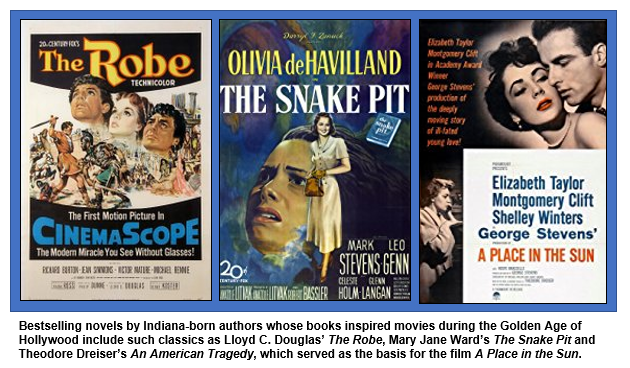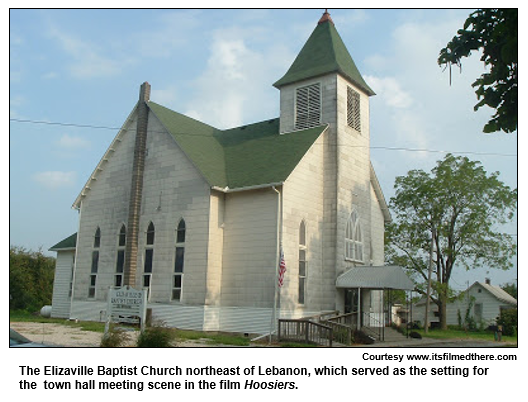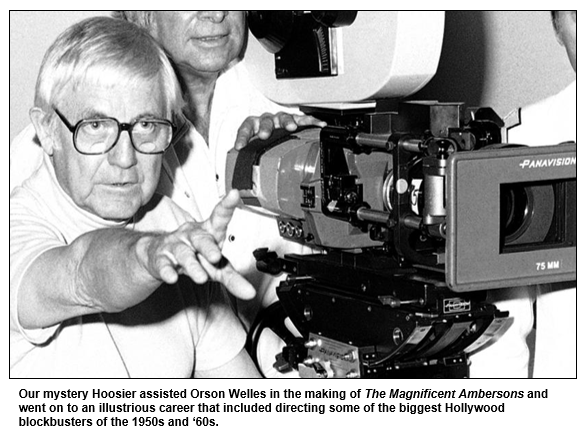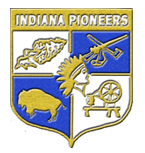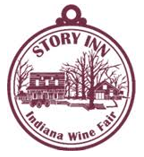Saturdays, noon to 1 p.m. ET on WICR 88.7 FM.
Or listen live from anywhere on WICR Online!
Our call-in number during the show: (317) 788-3314

May 5, 2018
Movie versions of Hoosier novels
 Two Pulitzer Prize-winners, a classic about the American dream, a page turner about a home invasion by criminals and an account of harrowing conditions in a mental health facility.
Two Pulitzer Prize-winners, a classic about the American dream, a page turner about a home invasion by criminals and an account of harrowing conditions in a mental health facility.
Those are descriptions of bestselling novels by Indiana-born authors whose books inspired movies during the Golden Age of Hollywood. This show will spotlight the movie versions of these novels, which include the Magnificent Ambersons (1942), A Place in the Sun (1951), The Desperate Hours (1955), The Snake Pit (1948), The Robe (1953) and Raintree County (1957).
Dan O'Brien, a former TV sportscaster and screenwriter based in Greenwood, will be Nelson's studio guest to share insights about the transformation of the Hoosier novels into films. The Indiana-born authors associated with the movies to be discussed will include:
- Booth Tarkington of Indianapolis, who won his first Pulitzer Prize in 1918 for The Magnificent Ambersons, a novel about social upheavals in a Midwestern city brought on by the coming of the automobile. The 1942 movie version, directed by Orson Welles, had a cast that included Anne Baxter, a native of Michigan City, Ind. The A&E cable network also broadcast a version of The Magnificent Ambersons in 2002. Tarkington won his second Pulitzer for Alice Adams, which was made into a movie in 1935 starring Katharine Hepburn.
Theodore Dreiser of Terre Haute, the author of An American Tragedy (1925). The most successful movie version of the novel was titled A Place in the Sun (1951) and starred Montgomery Clift and Elizabeth Taylor. An earlier film version, titled An American Tragedy, was made in 1931.
- Joseph Hayes of Indianapolis, whose bestselling novel The Desperate Hours was inspired by true crimes, particularly a home invasion in Philadelphia. Hayes wrote both the Broadway play version and the screen adaptation of his novel, in which he shifted the setting to Indianapolis. The movie starred Humphrey Bogart.
- Mary Jane Ward of Fairmount, Ind. Her semi-autobiographical novel about shocking conditions in a psychiatric facility, The Snake Pit, became a critically acclaimed movie in 1948 starring Olivia de Havilland, who was nominated for an Academy Award.
- Ross Lockridge Jr of Bloomington, the author of the 1948 bestseller Raintree County. The lavish 1957 movie version reunited Clift and Taylor. History fact: Lockridge and Mary Jane Ward were cousins.
- Lloyd C. Douglas of Columbia City. His novel The Robe inspired a Biblical spectacle starring Richard Burton in 1953. One of Douglas' other novels, Magnificent Obsession, was filmed at least twice, including a 1954 version that starred Rock Hudson.
- Alan Le May, an Indianapolis native who became best known for writing Westerns. They included The Searchers in 1954, which was turned into a movie two years later. The film starred John Wayne under the direction of John Ford; critics consider it one of Hollywood's most influential Westerns.
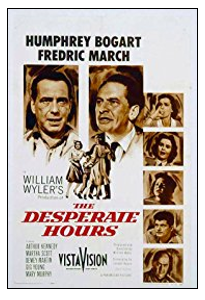
There's plenty of Hoosier turf with the Golden Age movies, however. Although the Midwestern city in The Magnificent Ambersons is called Midland, it instantly was recognized as Indianapolis when Tarkington's novel was published. Orson Welles was said to have been fascinated both by Tarkington (1869-1946) himself and by the award-winning novel. According to some accounts, Welles wanted to make his debut as a director with the film version of The Magnificent Ambersons rather than with what is considered his masterpiece, Citizen Kane (1941). Our guest Dan O'Brien says Welles was convinced the character of Eugene (an inventor played in the movie by Joseph Cotten) was inspired by Welles' own father, who may have known Tarkington.
Of all of the movie versions of novels on our agenda, the 1953 opening of The Robe "was probably the most anticipated Hollywood premiere, not only due to the popularity of the novel, but because it was the debut of Cinemascope," Dan says. The plot of The Robe is about the aftermath of the crucifixion of Jesus. Hoosier-born author Lloyd C. Douglas (1877-1951) was an ordained Lutheran minister who did not write his first novel until age 50.
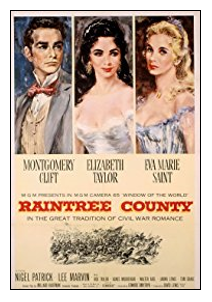
Filming of The Desperate Hours unfolded smoothly, but that was not the case for Raintree County, which was plagued with problems. Ross Lockridge Jr had committed suicide the year his novel was published (it sold 400,000 copies in 1948, becoming the most popular book of the year); during the filming, Montgomery Clift was involved in an auto accident that left the star disfigured. Raintree County, a historic saga set during the Civil War era, is centered on the life of John Shawnessy (played by Clift), a teacher and poet who must choose between his sweetheart, a local girl, and a visiting southern belle, played by Elizabeth Taylor. Lockridge used Henry County, Ind., as the inspiration for fictional Raintree County.
Lockridge's cousin Mary Jane Ward (1905-1981) is credited with focusing national attention on the need to improve mental health care following the publication of The Snake Pit. Although Olivia de Havilland won two Oscars for other films, she has been quoted as saying her performance in The Snake Pit was her best work.
Roadtrip: Hoosiers sites in and near Lebanon, Ind.
While we're focused on Hollywood films with a Hoosier connection, let's lot not forget the most iconic Hoosier film of them all: Hoosiers, of course. The 1986 basketball Cinderella story starring Gene Hackman and Barbara Hershey was filmed at various locations around Indiana, and this week's guest Roadtripper Jeff Kamm will take us to a few of those sites in and around the town of Lebanon.
Jeff's first stop is Lebanon's Memory Hall gymnasium, which played the role of Jasper Regional in the movie. Memory Hall was built in 1931 and served as the Lebanon varsity gymnasium until 1968, when a new school and gym were constructed in another part of town.
Then it's on to the site of the Avon Theater on the northwest corner of the town square in Lebanon. The colorful marquee of the Avon appears briefly in Hoosiers on the night of the state finals. Sadly, the theater was consumed by fire in 1999; the site is now occupied by a flower shop.
Next stop on the Roadtrip: the Elizaville Baptist Church just northeast of Lebanon, which served as the setting for the film's town hall meeting scene, where a vote is cast to determine whether Coach Dale will remain or lose his job.
Finally, Jeff takes us to the rural crossroads of Terhune in the northeastern corner of Boone County, which appears in the film's opening scene when Coach Dale is making his way to Hickory. The grain elevator visible in the scene is long gone, but the general store where the men are loafing out front is still standing.
Fans of Hoosiers won't want to miss this exciting Roadtrip to filming locations of this sports classic!
History Mystery
Hoosier connections to the 1942 movie version of The Magnificent Ambersons include an editor on the film who later became one of the top directors in Hollywood.
He was born in Winchester, Ind., grew up in Connersville and graduated from Connersville High School.
During the 1930s, he obtained an entry-level job at RKO Studios. His work on The Magnificent Ambersons was an unpleasant experience, however, because he was ordered to make drastic cuts to the movie in the absence of its famous director, Orson Welles, who was infuriated.
The Hoosier went on to tremendous success during the 1950s and '60s. He directed a wide range of movies, including some of the era's biggest box office hits. Two of the movie musicals he directed during the 1960s won the Academy Award as Best Picture of the Year.
Question: Who was the Indiana-born Hollywood director?
The call-in number is (317) 788-3314. Please do not call in to the show until you hear Nelson pose the question on the air, and please do not try to win if you have won any other prize on WICR during the last two months. You must be willing to give your first name to our engineer, you must answer the question correctly on the air and you must be willing to give your mailing address to our engineer so we can mail the prize pack to you. The prize is two tickets to the Indiana Wine Fair on May 12 in Brown County, courtesy of the Story Inn, and two passes to the Indiana History Center, courtesy of the Indiana Historical Society.
Please feel free to post our Hoosier History Live podcasts anywhere!
As you have probably noticed, we've been placing a link to our podcast at the top of each week's Hoosier History Live newsletter and website, making each show available a week after the original broadcast.
We do experience an occasional technical glitch, but with the help of our Hoosier History Live tech team and the capable studio engineers at WICR, we're committed to making the nation's only live talk radio history show available in the podcast format. This does involve additional expenses, and so we appreciate the sponsors who have supported these efforts in exchange for underwriting credits on the podcast.
Please feel free to copy and paste our podcast links on your personal website, FaceBook page or other social media. Our goal is to get our show's content out there to the universe, and you can help by posting and providing links to your friends and followers. We do maintain copyright, of course, and ask that you not edit the podcasts we post.
If you love Hoosier History Live, help us get the word out online!
Nelson Price, host and historian
Molly Head, producer/project manager, (317) 927-9101
Michael Armbruster, associate producer
Cheryl Lamb, marketing and administrative manager
Richard Sullivan, senior tech consultant
Pam Fraizer, graphic designer
Garry Chilluffo, special events consultant
Please tell our sponsors that you appreciate their support!

 Acknowledgments to Monomedia, Visit Indy, WICR-FM, Fraizer Designs, Heritage Photo & Research Services, Henri Pensis, Chris Shoulders and many other individuals and organizations. We are an independently produced program and are self-supporting through organizational sponsorships and individual contributions. We do not receive any government funding. Visit our website to learn how you can support us financially. Also, see our Twitter feed and our Facebook page for regular updates. And thanks to the Indiana University Bicentennial for sponsoring the podcast of the "Faculty war of 1832: Early IU history" show. Any of our podcasts can be sponsored for a nominal fee.
Acknowledgments to Monomedia, Visit Indy, WICR-FM, Fraizer Designs, Heritage Photo & Research Services, Henri Pensis, Chris Shoulders and many other individuals and organizations. We are an independently produced program and are self-supporting through organizational sponsorships and individual contributions. We do not receive any government funding. Visit our website to learn how you can support us financially. Also, see our Twitter feed and our Facebook page for regular updates. And thanks to the Indiana University Bicentennial for sponsoring the podcast of the "Faculty war of 1832: Early IU history" show. Any of our podcasts can be sponsored for a nominal fee.
Thank you!
We'd like to thank the following recent, new and renewal contributors whose donations help make this show possible!
- In memory of Elizabeth Meyer Strain Gunn by Roz Wolen
- Margaret Smith
- Stacia Gorge
- Robin Jarrett
May 12, 2018 - Upcoming
Richmond Hill explosion of 2012
At about 11:10 pm on the night of November 10, 2012, an explosion rocked the Richmond Hill subdivision, an explosion so powerful a wildlife video camera 15 miles away captured its sound. Earthquake detection equipment in Martinsville, Indiana, 30 miles away, also registered the shock of the blast . . . Closer to Richmond Hill, people living in a five-mile radius of the neighborhood heard a huge boom and then felt their houses shake.
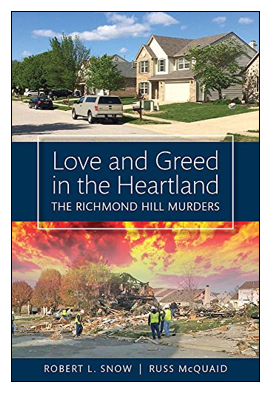
Russ covered the explosion, its aftermath and the trial of Mark Leonard, the mastermind behind the devastating blast. In late January of this year, Leonard died while serving two life sentences at the Wabash Correctional Facility in Sullivan County. In addition to being convicted of two counts of murder, he was convicted on several other charges, including multiple counts of arson. Four other people - including Leonard's girlfriend, Monserrate Shirley, who owned the house that exploded, and his half-brother, Robert Leonard - also were convicted on various charges for their roles in the crime that was the focus of national news for days.
As our guests write, the Richmond Hill explosion was the result of "an insurance fraud scheme gone fatally wrong." The perpetrators hoped to collect about $300,000 in insurance money. When the explosion occurred - killing neighbors Dion and Jennifer Longworth - Mark Leonard and Monserrate Shirley were 90 miles away at the Hollywood Casino in Lawrenceburg, Ind.
During our show, Bob Snow and Russ McQuaid will share insights about the events that led up to the explosion, the subsequent trials and the impact on the lives of the Hoosiers involved. Bob Snow is the author of 17 books, including several dealing with true crime. He and Russ McQuaid, a veteran investigative journalist, dedicate Love and Greed in the Heartland to the Longworths.
© 2018 Hoosier History Live. All rights reserved.
|

